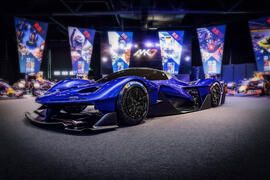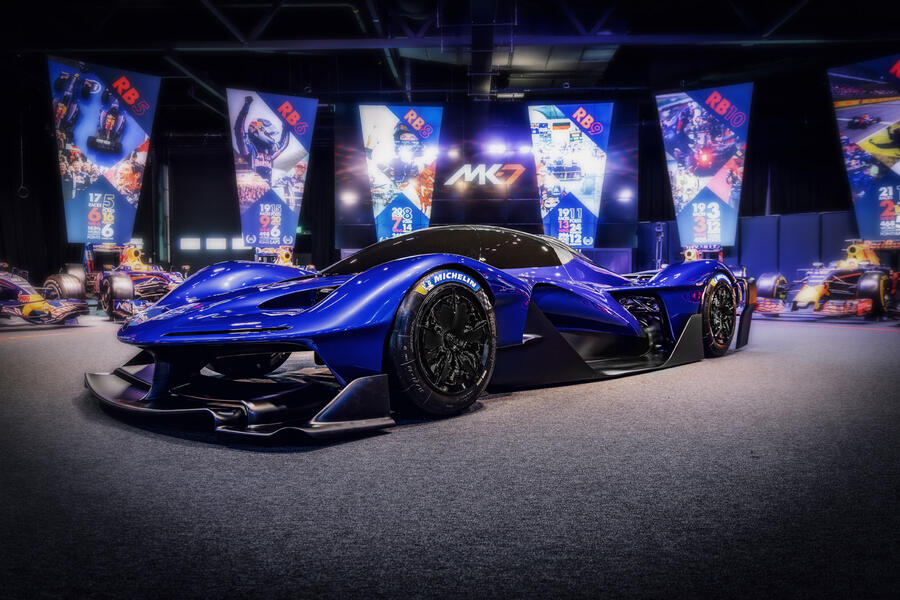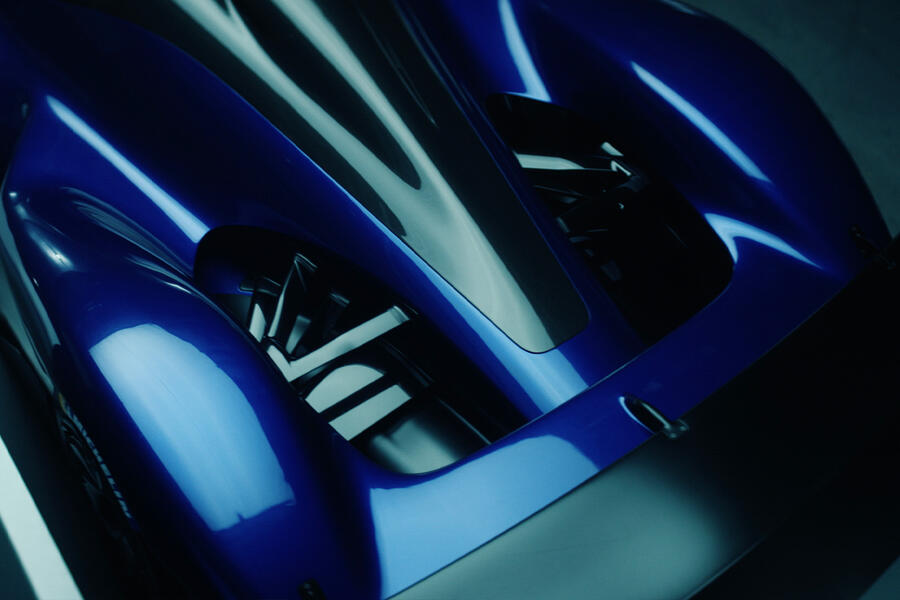
Development of the RB17, which has a top speed in excess of 217mph, will now ramp upThe V10-powered 217mph two-seat RB17 is the final Red Bull project from engineer Adrian Newey
The Red Bull RB17 is a dramatic track-only hypercar that can lap quicker than a Formula 1 car, according to its creator, Adrian Newey.
The 1184bhp, V10-powered RB17 is the design legend’s swansong at Red Bull ahead of his departure from the group and has been revealed at the 2024 Goodwood Festival of Speed. A limited run of 50 examples will be produced.
The two-seat RB17 has been in its concept design phase for three years. Newey kick-started the project in 2021 while developing the F1 car that took Max Verstappen to his first world title and also while researching the then-new F1 regulations that would come into effect in 2022.
Development of the RB17, which has a top speed in excess of 217mph, will now ramp up, including the first firing of the Cosworth-developed engine on the dyno later this summer. The car is expected to turn a wheel for the first time in track testing next summer.

The RB17 is a successor of sorts to the Aston Martin Valkyrie, the first road car Newey was heavily involved in the engineering of during a now defunct tie-up between Aston and Red Bull. But whereas the Valkyrie was designed to be road legal, the RB17 is a pure track machine created by a team of around 120 engineers at Red Bull Advanced Technologies.
The specification of the RB17 reads almost like Newey’s greatest hits and includes active aerodynamics and suspension systems that he has pioneered in F1 in hugely successful technical roles at teams such as McLaren, Williams and Red Bull that have made him widely regarded as the greatest designer in the sport’s history.
Newey told Autocar there are three fundamental goals for the project: to look great – “at this level, cars should be considered pieces of art”; to sound great; and to ensure drivers of “all levels can go out, enjoy themselves and improve themselves”, not just F1 drivers.
The sheer volume of technology on the car enables a high degree of adjustability to myriad systems. But while the performance levels are prodigious, Newey wants the carbonfibre RB17 to remain accessible and exploitable, even for less experienced drivers.

“As long as you have a reasonable amount of track experience, then this is a car you can enjoy right from the start,” said Newey. “But at its ultimate performance level, then it’s capable of Formula 1 lap times.”
The original plan was to make the car four-wheel drive with a twin-turbocharged V8 engine driving the rear wheels and an electric motor driving the front wheels. However, the final production model will use a high-revving, normally aspirated V10 developed by Cosworth and mated to a more conventional hybrid system.
The 986bhp V10 revs all the way to 15,000rpm. The engine is hooked up to a carbonfibre transmission of Red Bull’s own design related to the one used in its F1 car that integrates a 197bhp electric motor. This not only provides performance assistance but also acts as a starter motor and reverse gear and helps the car move away from a standstill.
The RB17 weighs just 805kg in its lightest form, shorn of items such as air conditioning and a glass windscreen, and it is around five metres long and two metres wide.
The model revealed at Goodwood is a design from last August. Newey said development work since then has made the car “a little bit smaller”.

Three tyre options will be offered. Each has been developed in conjunction with Michelin especially for the RB17, including a slick that unlocks the car’s full performance potential.
Although the car is not road legal, Newey suggested that people will be able to convert it for road use should they wish. Being a track-only car from the factory, it is not bound by legislation around emissions and safety although Newey said it has been designed to comply with LMH motorsport safety regulations.
The RB17 is not eligible to compete in any existing race series, so Red Bull will instead offer customers bespoke track days and experiences. While its F1 drivers, including Verstappen, will drive the car on the simulator to aid development, a much broader range of drivers will also be invited to test it to ensure that it will be as accessible as possible.
Red Bull will manufacture the 50 cars in-house over two years. Aside from the engine, which comes from Cosworth instead of Honda, it is using the same suppliers as it does for its F1 cars.